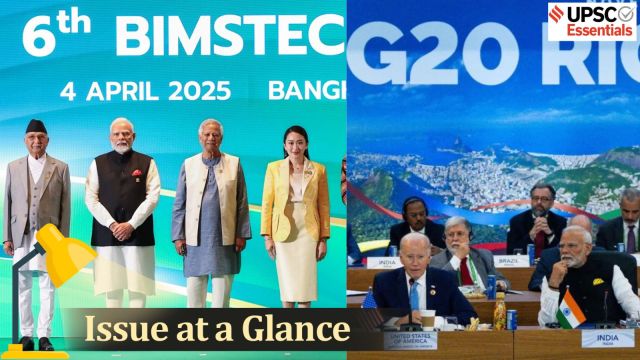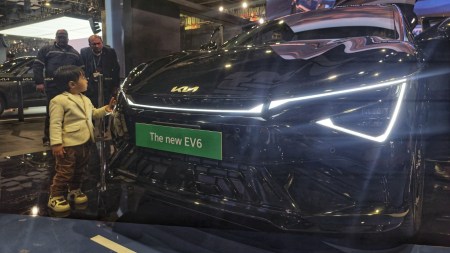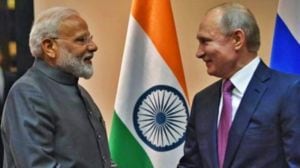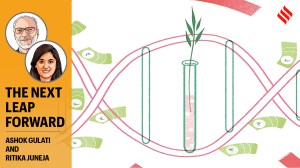
What is the issue?
Regional and global groupings form an indispensable part of the UPSC CSE syllabus. The number of prelims and mains questions tells us that this theme is unavoidable. A significant number of questions have been asked about the bilateral, regional, and global groupings, their summits and agreements that involve India or affect India’s interests.
Story continues below this ad
These questions often focus on India’s participation in various groups, particularly concerning India’s foreign policy goals and strategic interests. For instance, in 2022, the UPSC asked a question comparing BIMSTEC and SAARC. Such questions highlight the growing importance of these groupings in the examination. Therefore, knowing about regional/global groups and summits that have been in the news becomes crucial, as questions could potentially be asked about them in prelims and the main examination.
(Relevance: UPSC Syllabus General Studies-II: Current events of national and international importance, Bilateral, regional, and global groupings and agreements involving India and/or affecting India’s interests. Important International institutions, agencies, and fora- their structure, mandate.)
G20 Summit, 2024
The 18th G20 Summit was held in Rio de Janeiro from 18 to 19 November 2024. The Summit brought together leaders from major economies to discuss trade, climate change, and security. The summit theme under Brazil’s presidency was ‘Building a Just World and a Sustainable Planet’, focusing on reducing poverty, promoting social inclusion, and reforming global governance systems.
Key Takeaways:
 PM Modi met global leaders including US President Joe Biden, French President Emmanuel Macron and UK Prime Minister Keir Starmer at the G20 Summit. (PTI Photo)
PM Modi met global leaders including US President Joe Biden, French President Emmanuel Macron and UK Prime Minister Keir Starmer at the G20 Summit. (PTI Photo)
1. Global Alliance Against Hunger and Poverty: Brazil launched the Global Alliance for Hunger and Poverty at the G20 Summit in Rio with an initial 41 participating members. Presently, the alliance has 93 members. The members have pledged to lift 500 million people out of poverty through cash transfers and social protection systems.
Story continues below this ad
2. G20 Call to Action on Global Governance Reform: The G20 countries pledged to reform the United Nations Security Council through a transformative reform that aligns it with the realities and demands of the 21st century. They also called for an enlarged Security Council composition. Member countries also pledged to strengthen the Economic and Social Council (ECOSOC) through greater synergies and coherence with UN agencies, funds and programmes to better promote sustainable development.
3. G20 Roadmap for more effective Multilateral Development Banks (MDBs): Building on the legacy of previous G20 presidencies, the mandate given in New Delhi, and G20 countries endorse the G20 Roadmap towards Better, Bigger, and More Effective Multilateral Development Banks (MDBs), which presents comprehensive recommendations and actions for MDBs to evolve their visions, incentive structures, etc.
4. Bridging digital divides: G20 countries reaffirmed their commitment to bridge digital divides and prioritise the inclusion of people in vulnerable situations and halving the gender digital divide by 2030. Declaration on Digital Public Infrastructure, AI and Data for Governance – Joint Communiqué by the G20 Troika (India, Brazil and South Africa) was endorsed by several G20 countries.
About Group of Twenty
Story continues below this ad
1. The G20, or the Group of Twenty, is an informal grouping of 19 countries (Argentina, Australia, Brazil, Canada, China, France, Germany, India, Indonesia, Italy, Japan, Republic of Korea, Mexico, Russia, Saudi Arabia, South Africa, Turkey, United Kingdom, and the United States) and the European Union and African Union.
 Notably, the African Union, a grouping that represents 55 countries, was admitted as a new member of the G20 in June 2023.
Notably, the African Union, a grouping that represents 55 countries, was admitted as a new member of the G20 in June 2023.
2. These members represent around 85 per cent of the global GDP, over 75 per cent of global trade, and about two-thirds of the world population. As a forum for international economic cooperation, it plays an important role in shaping and strengthening global architecture and governance on all major international economic issues.
3. Unlike the United Nations (UN), G20 does not have a permanent secretariat or staff. Rather, the G20 presidency rotates annually among the members and is responsible for bringing together the G20 agenda, organising its workings and hosting summits.
4. The presidency is supported by the “troika” – previous, current and incoming presidencies.
Story continues below this ad
(Note: South Africa will host the G20 in 2025, followed by the United States of America in 2026. )
(PYQ Insight: In UPSC CSE Prelims of 2022, a question was asked with reference to the “G20 Common Framework”, and in 2020, a question appeared on the G20 member countries.)
Quad Leaders’ Summit 2024
Prime Minister Narendra Modi attended the Quad leaders’ summit in Wilmington, Delaware, on September 21, 2024. It was hosted by the former US President Joseph R. Biden. Underlining that leaders of the Quad grouping — India, US, Japan, and Australia — were meeting amid global “tensions and conflicts”, Prime Minister Narendra Modi said that they “are not against anyone”, and all of them “support a rules-based international order, respect for sovereignty and territorial integrity, and the peaceful resolution of all issues”.
 Delaware: President Joe Biden, Prime Minister Narendra Modi, Australia’s Prime Minister Anthony Albanese (L) and Japan’s Prime Minister Fumio Kishida at the Quadrilateral Cancer Moonshot initiative event on the sidelines of the Quad Leaders Summit at Archmere Academy in Claymont, Delaware, USA, Sept. 21, 2024. (PTI Photo)
Delaware: President Joe Biden, Prime Minister Narendra Modi, Australia’s Prime Minister Anthony Albanese (L) and Japan’s Prime Minister Fumio Kishida at the Quadrilateral Cancer Moonshot initiative event on the sidelines of the Quad Leaders Summit at Archmere Academy in Claymont, Delaware, USA, Sept. 21, 2024. (PTI Photo)
Notably, it was India’s turn to host the Quad Summit in 2024. “Following the request of the US side to host the Quad Summit this year, India has agreed to host the next Quad Summit in 2025,” the MEA said.
Story continues below this ad
Key Takeaways:
1. QUAD Cancer Moonshot: The QUAD has launched it as a collective effort to leverage public and private resources to reduce the number of lives lost to cancer in the Indo-Pacific, with an initial focus on cervical cancer. Under this, India will provide $7.5 million worth of HPV sampling kits, detection kits and cervical cancer vaccines to countries in the Indo-Pacific.
2. Maritime Initiative for Training in the Indo-Pacific (MAITRI): Quad partners agreed to launch a MAITRI to enable Indo-Pacific partners to maximise tools provided through Indo-Pacific Maritime Domain Awareness (IPMDA) and other Quad initiatives. MAITRI will enable regional partners to monitor and secure their waters, enforce their laws, and deter unlawful behaviour. India will host the inaugural MAITRI workshop in 2025 (during India’s Quad Presidency).
3. Quad-at-Sea Ship Observer Mission: The First-ever “Quad-at-Sea Ship Observer Mission” in 2025 to improve interoperability and advance maritime safety between member countries Coast Guards across the Indo-Pacific.
4. Quad maritime legal dialogue: QUAD also launched the Quad maritime legal dialogue to support efforts to uphold the rules-based maritime order in the Indo-Pacific.
Story continues below this ad
5. Consensus on Reform in UN Security Council: The Leaders also agreed to reform the UN Security Council and recognised the urgent need to make it more representative, inclusive, transparent, efficient, effective, democratic and accountable through expansion in permanent and non-permanent categories of membership of the UN Security Council.
6. Quad Ports of the Future Partnership: It will harness the Quad’s collective expertise to support sustainable and resilient port infrastructure development across the Indo-Pacific. Here, Quad partners will share practices to ensure that ports can maintain an acceptable level of service and infrastructure to ships, cargoes, and other customers in the face of disruptions (e.g. pandemics, natural disasters and cyber or terrorist attacks).
About the QUAD
1. Following the Indian Ocean tsunami of December 2004, India, Japan, Australia, and the US created an informal alliance to collaborate on disaster relief efforts. In 2007, then PM of Japan, Shinzo Abe, formalised the alliance, as the Quadrilateral Security Dialogue or the Quad.
2. However, the group was hampered by a lack of cohesion amongst members and accusations that the Quad was nothing more than an anti-China bloc. Thus, the early iteration of the Quad, largely based on maritime security, eventually dissipated. In 2017, faced again with the rising Chinese challenge, the four countries revived the Quad, and broadened its objectives.
Story continues below this ad
3. The Quad is not structured like a typical multilateral organisation, and lacks a secretariat and any permanent decision-making body (like the EU or UN). Additionally, unlike NATO, the Quad does not include provisions for collective defence, instead choosing to conduct joint military exercises as a show of unity and diplomatic cohesion.
4. In 2020, the trilateral India-US-Japan Malabar naval exercises expanded to include Australia, marking the first official grouping of the Quad since its resurgence in 2017, and the first joint military exercises among the four countries in over a decade.
5. In March 2021, the Quad leaders met virtually and later released a joint statement titled ‘The Spirit of the Quad,’ which outlined the group’s approach and objectives.
(PYQ Insight: In UPSC CSE Mains of 2020, a question was asked about how the Quadrilateral Security Dialogue (Quad) is transforming itself from a military alliance into a trade bloc in present times.)
Story continues below this ad
BRICS Summit 2024
The 16th BRICS Summit was held in Kazan (Russia) from 22 to 24 October, 2024. The Kazan Summit was the first-ever meeting of BRICS+ and leaders from Egypt, Ethiopia, Iran and the UAE participated. Saudi Arabia has yet to formalise its membership, but its foreign minister participated in the Summit. The theme of the summit was ‘Strengthening Multilateralism for Just Global Development and Security‘.
Key Takeaways:
1. Kazan Declaration: Issued at the end of the Summit, the Kazan Declaration reiterates the demand for equitable global governance, advocates restoring peace through dialogue, and encourages cooperation among countries of the Global South.
 Prime Minister Narendra Modi with Russia’s President Vladimir Putin, China’s President Xi Jinping and other world leaders during the 16th BRICS Summit, in Kazan, Russia, Wednesday, Oct 23, 2024. (PTI)
Prime Minister Narendra Modi with Russia’s President Vladimir Putin, China’s President Xi Jinping and other world leaders during the 16th BRICS Summit, in Kazan, Russia, Wednesday, Oct 23, 2024. (PTI)
2. Introduction of New category of ‘Partner country’ under BRICS: A “partner country” status designation was introduced at the 2024 summit in Kazan. Notably, this year, Nigeria was given “partner country” status, earlier Belarus, Bolivia, Cuba, Kazakhstan, Malaysia, Thailand, Uganda, and Uzbekistan have been given the same status.
3. Strengthening multilateralism for more democratic Global Order: BRICS member countries affirmed their commitment to multilateralism and upholding international law. Countries also called for making the global governance more inclusive by reforming the major multilateral institutions such as the UN Security Council, World Bank, IMF and WTO.
4. More financial integration among member countries: For enhancing financial cooperation, BRICS countries welcomed the use of local currencies in financial transactions between BRICS countries and their trading partners.
About the BRICS
1. BRICS stands for Brazil, Russia, India, China, and South Africa, the original five members who were large, non-Western economies. In January this year, Indonesia officially joined the BRICS as a full member taking total membership to 10. Egypt, Ethiopia, Iran, and the United Arab Emirates joined the block last year. The organisation now represents almost half the world’s population and almost one-quarter of the world’s economy. Saudi Arabia has been invited to join.
2. The acronym BRIC was first used in 2001 by Goldman Sachs in their Global Economics Paper, ‘The World Needs Better Economic BRICs’. The paper projected that Brazil, Russia, India, and China would be among the world’s largest economies in the next 50 years or so.
3. As a formal grouping, BRIC started after the meeting of the leaders of Russia, India and China in St. Petersburg on the margins of the G8 Outreach Summit in 2006. The grouping was formalised during the first meeting of BRIC Foreign Ministers on the margins of the UNGA in New York in 2006.
4. The first BRIC Summit was held in Yekaterinburg, Russia, in 2009. It was decided to include South Africa at the BRIC Foreign Ministers’ meeting in New York in 2010, and accordingly, South Africa attended the 3rd BRICS Summit in Sanya, China, in 2011.
5. Notably, the New Development Bank (NDB) is a multilateral development bank established by BRICS countries. The idea of setting up NDB was first conceived in 2012 during the BRICS Summit in New Delhi, India. The agreement to establish it was signed on July 15, 2014, and became operational on July 21, 2015, during the BRICS Summit held in Fortaleza. This is known as the Fortaleza Declaration.
(PYQ Insight: In UPSC CSE Prelims 2014, a question was about BRICS; in 2015, a question focused on the ‘Fortaleza Declaration’; and in 2016, about the New Development Bank initiative.)
BIMSTEC Summit 2025
The 6th Bay of Bengal Initiative for Multi-Sectoral Technical and Economic Cooperation (BIMSTEC) summit was convened in Bangkok (Thailand) on April 4, bringing together the leaders of seven member countries: Bangladesh, Bhutan, India, Myanmar, Nepal, Sri Lanka, and Thailand. The theme of the sixth BIMSTEC summit was “Prosperous, resilient, and open BIMSTEC (PRO BIMSTEC)“. This was the first physical meeting of the BIMSTEC leaders since the 4th BIMSTEC Summit in Kathmandu, Nepal, in 2018. The last summit was held in Colombo in March 2022 in virtual format.
Key Takeaways:
1. Bangkok Vision 2030: The summit marked a turning point with the unanimous adoption of the Bangkok Vision 2030, a comprehensive framework designed to guide BIMSTEC’s future. The vision document provides a roadmap for a prosperous, resilient, and open Bay of Bengal region. It emphasises the need to build regional capacities to address common challenges, including those arising from natural disasters, economic shocks, and geopolitical uncertainties.
 The Bangkok Vision 2030 presents a fresh opportunity to overcome past limitations and forge a more integrated, prosperous, and sustainable future for the region’s 1.7 billion people. (ANI Photo)
The Bangkok Vision 2030 presents a fresh opportunity to overcome past limitations and forge a more integrated, prosperous, and sustainable future for the region’s 1.7 billion people. (ANI Photo)
2. BIMSTEC Centre of Excellence on Disaster Management: India’s proposal to establish a BIMSTEC Centre of Excellence on Disaster Management was accepted, aiming to improve early warning systems, build regional response capabilities, and foster collaboration in humanitarian assistance.
3. BODHI initiative: PM Modi introduced the BODHI initiative (BIMSTEC for Organised Development of Human resource Infrastructure), aimed at fostering people-to-people ties, education, and skill development.
4. Maritime and digital connectivity: A maritime transport cooperation agreement was signed at the summit, expected to streamline shipping routes, enhance mutual recognition of maritime documentation, and establish dispute resolution mechanisms.
5. BIMSTEC Chamber of Commerce: India also offered to support the establishment of a BIMSTEC Chamber of Commerce and host an annual BIMSTEC business summit, recognising the region’s deep-rooted civilisational and historical links.
6. Digital infrastructure: India’s proposal to enhance AI and digital capabilities across the region received widespread support.
About the BIMSTEC
1. BIMSTEC includes countries of the Bay of Bengal region, and seeks to act as a bridge between South and Southeast Asia. Originally formed as BIST-EC (Bangladesh, India, Sri Lanka, and Thailand Economic Cooperation) in 1997, it became BIMST-EC after Myanmar joined, and BIMSTEC in 2004 with the inclusion of Nepal and Bhutan. It received a charter at the 2022 Colombo summit, which came into effect last year after all members ratified it.
2. According to BIMSTEC’s official site, the region is home to around 1.8 billion people, nearly 22 percent of the global population, and has a combined gross domestic product (GDP) of US$3.6 trillion. The main aim of the regional group was to promote economic cooperation between countries bordering the Bay of Bengal.
3. Cooperation within the BIMSTEC had initially focused on six sectors in 1997 (trade, technology, energy, transport, tourism, and fisheries) and expanded in 2008 to other areas. In 2021, a reorganisation led to each of the Member States leading certain sectors.
4. The current Secretary General of the BIMSTEC is Indra Mani Pandey from India. During the Third BIMSTEC Summit (2014) held in Nay Pyi Taw, Myanmar, the Secretariat was established in Dhaka, Bangladesh.
(PYQ Insight: UPSC has asked a question on the difference between BIMSTEC and SAARC.)
21st ASEAN-Indian Summit 2024
The 21st ASEAN-India Summit was held in Vientiane, Lao PDR, on 10 October 2024. Participating in the summit, PM Modi announced a 10-point plan to strengthen India-ASEAN relations. The theme was “Enhancing Connectivity and Resilience”. Laos is the current chair of the Association of Southeast Asian Nations (ASEAN) founded.
 Prime Minister Narendra Modi at the 21st ASEAN-India Summit in Vientiane, Laos. (AP)
Prime Minister Narendra Modi at the 21st ASEAN-India Summit in Vientiane, Laos. (AP)
Key Takeaways:
1. 10-point plan: In keeping with the theme of ‘Enhancing Connectivity and Resilience’, the Prime Minister announced a 10-point plan. It focuses on a review of the ASEAN-India Trade in Goods Agreement by 2025, enhancing disaster resilience (for which India will make available USD 5 million), a new health ministers’ track towards building health resilience, and a regular mechanism of ASEAN-India Cyber Policy Dialogue towards strengthening digital and cyber resilience.
2. Strengthening ASEAN-India Comprehensive Strategic Partnership: Reaffirming the “importance of maintaining and promoting peace, stability, maritime safety and security, freedom of navigation and overflight in the region” India and ASEAN supports the effective implementation of the Declaration on the Conduct of the Parties in the South China Sea.
3. Cooperation on emerging technologies: India and ASEAN agreed to cooperate on “emerging technologies including Artificial Intelligence (AI), Blockchain technology, Internet of Things (IoT), Robotics, Quantum Computing, 6-G technology, building and strengthening of startups ecosystem with special emphasis on digital connectivity and financial technology”.
About the ASEAN
1. ASEAN is central to India’s Act East policy, which focuses on the extended neighbourhood in the Asia-Pacific region.
2. According to the ASEAN website: On 8 August 1967, five leaders – the Foreign Ministers of Indonesia, Malaysia, the Philippines, Singapore and Thailand – came together in Bangkok. Thailand was brokering some disputes among Malaysia, Indonesia and the Philippines, and it eventually led to the signing of a document- ASEAN Declaration.
3. Over the next few decades, five other countries joined them – Brunei Darussalam, Lao PDR, Cambodia, Myanmar and Vietnam.
4. They have an anthem, a flag and biannual summits (twice a year) with a rotating chairmanship. Its official motto is “One Vision, One Identity, One Community”.
5. The ASEAN Declaration conveyed the aspiration to further regional cooperation in the economic, social, cultural, technical, educational and other fields, and in the promotion of regional peace and stability and adherence to the principles of the United Nations Charter.
6. Its major pillars are Political-Security Community (APSC), Economic Community (AEC) and Socio-Cultural Community (ASCC).
(PYQ Insight: In UPSC CSE prelims of 2018, a question appeared on the ‘free-trade partners’ of ASEAN; earlier in prelims 2015, a question was asked on India’s membership in various regional groupings.)
Post Read Questions
Prelims
(1) With reference to the “G20 Common Framework”, consider the following statements (UPSC CSE 2022)
1. It is an initiative endorsed by the G20 together with the Paris Club.
2. It is an initiative to support Low Income Countries with unsustainable debt.
Which of the statements given above is/are correct?
(a) 1 only
(b) 2 only
(c) Both 1 and 2
(d) Neither 1 nor 2
(2) In which one of the following groups are all the four countries members of G20? (UPSC CSE 2020)
(a) Argentina, Mexico, South Africa and Turkey
(b) Australia, Canada, Malaysia and New Zealand
(c) Brazil, Iran, Saudi Arabia and Vietnam
(d) Indonesia, Japan, Singapore and South Korea
(3) Consider the following countries: ( UPSC CSE 2018)
1. Australia
2. Canada
3. China
4. India
5. Japan
6. USA
Which of the above are among the ‘free-trade partners’ of ASEAN?
(a) 1, 2, 4 and 5
(b) 3, 4, 5 and 6
(c) 1, 3, 4 and 5
(d) 2, 3, 4 and 6
(4) The ‘Fortaleza Declaration’, recently in the news, is related to the affairs of (UPSC CSE 2015)
(a) ASEAN
(b) BRICS
(c) OECD
(d) WTO
(5) With reference to a grouping of countries known as BRICS, consider the following statements: (UPSC CSE 2014)
1. The First Summit of BRICS was held in Rio de Janeiro in 2009.
2. South Africa was the last to join the BRICS grouping.
Which of the statements given above is/are correct?
(a) 1 only
(b) 2 only
(c) Both 1 and 2
(d) Neither 1 nor 2
Mains
(1) ‘Virus of Conflict is affecting the functioning of the SCO’. In the light of the above statement, point out the role of India in mitigating the problems. (UPSC CSE 2023)
(2) Do you think that BIMSTEC is a parallel organisation like the SAARC? What are the similarities and dissimilarities between the two? How are Indian foreign policy objectives realized by forming this new organisation? (UPSC CSE 2022)
(3) Critically examine the aims and objectives of SCO. What importance does it hold for India? (2021)
(4) ‘Quadrilateral Security Dialogue (Quad)’ is transforming itself into a trade bloc from a military alliance, in present times – Discuss. (UPSC CSE 2020)
(Sources: Knowledge nugget of the day: Global Alliance Against Hunger and Poverty, g20.org, PM Modi in US: What is the Quad grouping?, Quad summit, Biden-Modi meeting: 7 takeaways, What is BRICS?, What should you know about BIMSTEC and SAARC for UPSC?, BIMSTEC marks a turning point in regional solidarity, ASEAN, ASEAN Summit 2024)
For your queries and suggestions write at roshni.yadav@indianexpress.com
🚨 Click Here to read the UPSC Essentials magazine for March 2025. Share your views and suggestions in the comment box or at manas.srivastava@indianexpress.com🚨
Subscribe to our UPSC newsletter and stay updated with the news cues from the past week. Stay updated with the latest UPSC articles by joining our Telegram channel – Indian Express UPSC Hub, and follow us on Instagram and X.


 PM Modi met global leaders including US President Joe Biden, French President Emmanuel Macron and UK Prime Minister Keir Starmer at the G20 Summit. (PTI Photo)
PM Modi met global leaders including US President Joe Biden, French President Emmanuel Macron and UK Prime Minister Keir Starmer at the G20 Summit. (PTI Photo) Notably, the African Union, a grouping that represents 55 countries, was admitted as a new member of the G20 in June 2023.
Notably, the African Union, a grouping that represents 55 countries, was admitted as a new member of the G20 in June 2023. Delaware: President
Delaware: President  Prime Minister Narendra Modi with Russia’s President
Prime Minister Narendra Modi with Russia’s President  The Bangkok Vision 2030 presents a fresh opportunity to overcome past limitations and forge a more integrated, prosperous, and sustainable future for the region’s 1.7 billion people. (ANI Photo)
The Bangkok Vision 2030 presents a fresh opportunity to overcome past limitations and forge a more integrated, prosperous, and sustainable future for the region’s 1.7 billion people. (ANI Photo) Prime Minister Narendra Modi at the 21st ASEAN-India Summit in Vientiane, Laos. (AP)
Prime Minister Narendra Modi at the 21st ASEAN-India Summit in Vientiane, Laos. (AP)






























